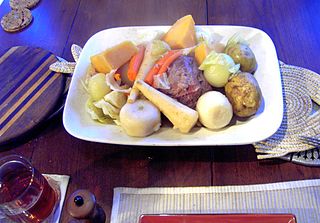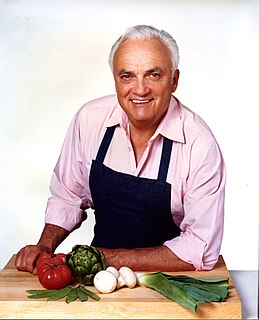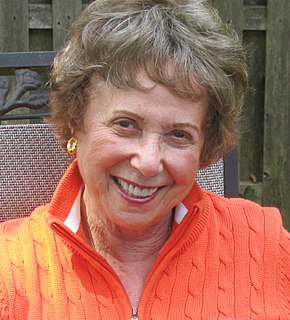
Aunt Jemima is a brand of pancake mix, syrup, and other breakfast foods. The Aunt Jemima pancake mix was advertised in 1889 as the first ready-mix. By 1915 it had become one of the most recognized brands in US history, and changed US trademark law.

A mammy, also spelled mammie, is a U.S. stereotype, especially in the South, for a black woman who worked in a white family and nursed the family's children. The mammy figure is rooted in the history of slavery in the United States. Black slave women were tasked with domestic and childcare work in white American slaveholding households.

A New England boiled dinner is a traditional New England meal, consisting of corned beef with cabbage and one or more root vegetables, such as potatoes, rutabagas, parsnips, carrots, turnips, or onions. The leftovers are traditionally diced and fried into “red flannel hash” for breakfast the next day. The dish resembles boiled beef from English cuisine, as well a similar Newfoundland dish called a "Jiggs dinner".

Mark Bittman is an American food journalist, author, and former columnist for The New York Times. Currently, he is a fellow at the Union of Concerned Scientists. Bittman has promoted VB6, a semi-vegan diet.

Pierre Franey was a French chef, best known for his televised cooking shows and his "60 Minute Gourmet" column in The New York Times.
Vertamae Smart-Grosvenor was an American culinary anthropologist, griot, food writer, and broadcaster on public media. Born into a Gullah family in the Low Country of South Carolina, she moved with them as a child to Philadelphia during the Great Migration. Later she lived in Paris before settling in New York City. She was active in the Black Arts Movement and performed on Broadway.

Irena Chalmers-Taylor was an author and food commentator/essayist, teacher and culinary mentor. Named "the culinary oracle of 100 cookbooks" by noted American restaurant critic and journalist, Gael Greene, Chalmers was recognized as the pioneer of the single subject cookbook. Her life story revealed an unlikely journey to becoming a James Beard Foundation "Who's Who" of Food and Beverage in America 1988 Award Recipient.

The Bacon Cookbook: More than 150 Recipes from Around the World for Everyone's Favorite Food is a cookbook on bacon by James Villas. It was published by Wiley in 2007. Villas is a former food editor for Town & Country magazine, and The Bacon Cookbook is his 15th book on food. He notes on the book's jacket that he was "beguiled by bacon since he was a boy." He describes the appeal of bacon in the book's preface, and in the introduction recounts the history of the product, as well as its variations from different locations internationally. Chapters are structured by type of recipe and food course, and in total the book includes 168 recipes.

No-knead bread is a method of bread baking that uses a very long fermentation (rising) time instead of kneading to form the gluten strands that give the bread its texture. It is characterized by a low yeast content and a very wet dough. Some recipes improve the quality of the crust by baking the bread in a Dutch oven or other covered vessel.

Ethel Greenwald Hofman is a widely syndicated Jewish American food and travel columnist, author and culinary consultant. She is a recognized authority on international Jewish foods and culture, with special emphasis on Israel and the United Kingdom.

John Martin Taylor, also known as Hoppin' John, is an American food writer and culinary historian, known for his writing on the cooking of the American South, and, in particular, the foods of the lowcountry, the coastal plain of South Carolina and Georgia. He has played a role in reintroducing many traditional southern dishes, and has advocated the return to stone-ground, whole-grain, heirloom grits and cornmeal production.

Hallelujah! The Welcome Table: A Lifetime of Memories with Recipes (2004) is author Maya Angelou's first cookbook. It pairs 28 essays written by Angelou with 73 recipes. Angelou got the title from an African-American spiritual. The book's audio version, which was produced at the same time as the print edition was published, was narrated by Angelou and included five cards created from recipes from the book.
Meta Hortense Given was an American entrepreneur, nutritionist, home economist, photographer and best-selling cookbook author.
Sarah Helen Bradley Toliver Mahammitt was a caterer, chef and author of cookbooks in Omaha, Nebraska. She studied at Le Cordon Bleu in Paris 1927 and sought to bring formal, European style cooking to African-American women in Omaha.
Elizabeth O. Hiller was a prominent early twentieth-century American author of cookbooks and a professor of culinary arts.
Melissa Clark is an American food writer and cookbook author. Since 2007, she has been a food columnist for The New York Times. She has written more than 40 cookbooks and in 2018 won a James Beard Award.
Violet Oon is a Singaporean chef, restaurateur, and food writer known for her food columns, cookbooks, and restaurants specializing in Peranakan cuisine. She has been the food ambassador of Singapore since 1988.

Francis Lam is an American food journalist, cookbook editor, and since 2017 the host of American Public Media's The Splendid Table.
In the 1950s, commercial cookbooks gained popularity in the United States. These cookbooks frequently suggested the use of packaged food and electric appliances, which had become more available due to the post-war economic boom. Cookbooks reflected these changes. Betty Crocker and Julia Child became popular icons in American culture through their cookbooks and the media during this era. Cookbooks also reflected many cultural trends of the 1950s, especially typical gender roles and racial identities. Many cookbooks were addressed to the white, middle-class housewife who cooked for her family in their suburban home. These cookbooks often excluded African-American, immigrant, and rural women. For them, handwritten cookbooks served as both personal histories and a means to express their views on politics and society. Meanwhile, advertisements promoted the racial stereotype of the “black mammy” that de-feminized African-American cooks in white households. Ethnic immigrants were also debased as European Americans baked their distinct cuisines into generic casseroles.












